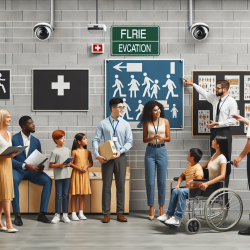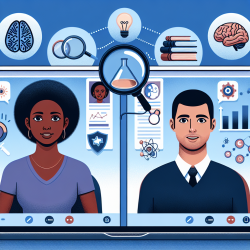As educators and specialists working with children, our paramount concern is the safety and well-being of our students. Recent research, such as the insights from "The epidemiology of school-related injuries: New perspectives," offers valuable information that can significantly improve our approach to preventing injuries within the school environment. This blog aims to translate these findings into practical strategies for practitioners, encouraging further exploration and implementation of these research outcomes.
Understanding the Scope of School-Related Injuries
Research has consistently shown that injuries in the school setting, though often minor, are not uncommon. The types of injuries range from cuts and scrapes to more severe cases like fractures and head injuries. Understanding the epidemiology of these injuries is the first step towards prevention. It involves recognizing the most common types of injuries, identifying high-risk periods during the school day, and acknowledging the environments (e.g., playgrounds, classrooms) where these injuries most frequently occur.
Strategies for Injury Prevention
- Enhanced Supervision: Allocate adequate supervision during high-risk periods, especially in areas like playgrounds where children are more prone to injuries.
- Safety Education: Integrate safety awareness and injury prevention into the curriculum. Regularly educate students on the importance of safety measures and encourage them to be vigilant.
- Environment Modification: Regularly inspect and maintain school facilities and playground equipment to ensure they meet safety standards. Simple modifications can significantly reduce the risk of injuries.
- Emergency Preparedness: Equip staff with the knowledge and skills to respond effectively to injuries. Regular training in first aid and emergency response procedures is crucial.
- Parental Involvement: Engage parents in discussions about safety, emphasizing the importance of reinforcing these messages at home.
Implementing Therapeutic Interventions
In cases where injuries do occur, it's essential to have a plan for therapeutic interventions. This includes having access to professionals such as occupational therapists, physiotherapists, and speech-language pathologists who can assist in the student's recovery process. Addressing therapist staffing shortages, a common challenge in many districts, is crucial in ensuring that students receive the support they need in a timely manner.
Collaboration and Continuous Learning
Preventing school-related injuries is a collaborative effort that requires the involvement of educators, therapists, administrators, and parents. Encouraging an environment of continuous learning and openness to new research findings is essential. Practitioners should be encouraged to stay informed through conferences, publications, and webinars, which provide insights into the latest trends and research in injury prevention and student safety.
Conclusion
By understanding the epidemiology of school-related injuries and implementing targeted prevention strategies, educators and therapists can create a safer school environment for all students. This involves not only a commitment to ongoing education and collaboration but also a dedication to adapting and applying new perspectives and research findings into practical, everyday practices. Together, we can work towards minimizing the risk of injuries and ensuring that our schools remain safe spaces for learning and growth.
For those interested in delving deeper into the research that inspired these strategies, please follow this link: The epidemiology of school-related injuries: New perspectives.










